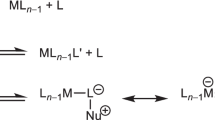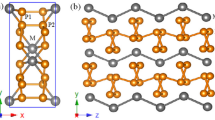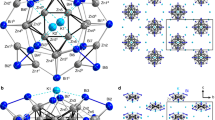Abstract
Electron transfer in mixed-valent transition-metal complexes, clusters and materials is ubiquitous in both natural and synthetic systems. The degree to which intervalence charge transfer (IVCT) occurs, dependent on the degree of delocalization, places these within class II or III of the Robin–Day system. In contrast to the d-block, compounds of f-block elements typically exhibit class I behaviour (no IVCT) because of localization of the valence electrons and poor spatial overlap between metal and ligand orbitals. Here, we report experimental and computational evidence for delocalization of 5f electrons in the mixed-valent PuIII/PuIV solid-state compound, Pu3(DPA)5(H2O)2 (DPA = 2,6-pyridinedicarboxylate). The properties of this compound are benchmarked by the pure PuIII and PuIV dipicolinate complexes, [PuIII(DPA)(H2O)4]Br and PuIV(DPA)2(H2O)3·3H2O, as well as by a second mixed-valent compound, PuIII[PuIV(DPA)3H0.5]2, that falls into class I instead. Metal-to-ligand charge transfer is involved in both the formation of Pu3(DPA)5(H2O)2 and in the IVCT.
This is a preview of subscription content, access via your institution
Access options
Access Nature and 54 other Nature Portfolio journals
Get Nature+, our best-value online-access subscription
$29.99 / 30 days
cancel any time
Subscribe to this journal
Receive 12 print issues and online access
$259.00 per year
only $21.58 per issue
Buy this article
- Purchase on Springer Link
- Instant access to full article PDF
Prices may be subject to local taxes which are calculated during checkout






Similar content being viewed by others
References
Rausch, J. et al. Heterometallic europium disiloxanediolates: synthesis, structural diversity, and photo-luminescence properties. Inorg. Chem. 53, 11662–11674 (2014).
Jones, M. B. et al. Uncovering f-element bonding differences and electronic structure in a series of 1:3 and 1:4 complexes with a diselenophosphinate ligand. Chem. Sci. 4, 1189–1203 (2013).
Fieser, M. E. et al. Structural, spectroscopic, and theoretical comparison of traditional vs recently discovered Ln2+ Ions in the [K(2.2.2-cryptand)][(C5H4SiMe3)3Ln] complexes: the variable nature of Dy2+ and Nd2+. J. Am. Chem. Soc. 137, 369–382 (2015).
Polinski, M. J. et al. Differentiating between trivalent lanthanides and actinides. J. Am. Chem. Soc. 134, 10682–10692 (2012).
Antonio, M. R., Xue, J. S. & Soderholm, L. The oxidation state of cerium in Ce2MoO6 . J. Alloys Compd. 207–208, 444–448 (1994).
Sykora, R. E. et al. Isolation of intermediate-valent Ce(III)/Ce(IV) hydrolysis products in the preparation of cerium iodates: electronic and structural aspects of Ce2(IO3)6(OHx) (x ≈ 0 and 0.44). Chem. Mater. 16, 1343–1349 (2004).
Morton, C. et al. Stabilization of cerium(IV) in the presence of an iodide ligand: remarkable effects of lewis acidity on valence state. J. Am. Chem. Soc. 121, 11255–11256 (1999).
Wickleder, C. A new mixed valent europium chloride: Na5Eu7Cl22 . Z. Naturforsch. 57b, 901–907 (2002).
Wickleder, C. KEu2Cl6 und K1,6Eu1,4Cl5: Zwei neue gemischtvalente Europiumchloride Z. Anorg. Allg. Chem. 628, 1815–1820 (2002).
van Schaik, W., Lizzo, S., Smit, W. & Blasse, G. Influence of impurities on the luminescence quantum efficiency of (La, Ce, Tb)PO4 . J. Electrochem. Soc. 140, 216–221 (1993).
Polinski, M. J. et al. Unusual structure, bonding and properties in a californium borate. Nat. Chem. 6, 387–392 (2014).
Neidig, M. L., Clark, D. L. & Martin, R. L. Covalency in f-element complexes. Coord. Chem. Rev. 257, 394–406 (2013).
Robin, M. B. & Day, P. Mixed valence chemistry: a survey and classification. Adv. Inorg. Chem. Radiochem. 10, 248–422 (1967).
Gaunt, A. J. et al. Experimental and theoretical comparison of actinide and lanthanide bonding in M[N(EPR2)2]3 Complexes (M = U, Pu, La, Ce; E = S, Se, Te; R = Ph, iPr, H). Inorg. Chem. 47, 29–41 (2008).
Riglet, C., Robouch, P. & Vitorge, P. Standard potentials of the (MO22+/MO2+) and (M4+/M3+) redox systems for neptunium and plutonium. Radiochim. Acta. 46, 85–94 (1989).
Heathman, C. R. & Nash, K. L. Characterization of europium and americium dipicolinate complexes. Sep. Sci. Tech. 47, 2029–2037 (2012).
Cary, S. K. et al. Emergence of californium as the second transitional element in the actinide series. Nat. Commun. 6, 6827–6834 (2015).
Silver, M. A. et al. Characterization of berkelium(III) dipicolinate and borate compounds in solution and the solid state. Science 353, aaf3762 (2016).
Cross, J. N. et al. Syntheses, structures, and spectroscopic properties of plutonium and americium phosphites and the redetermination of the ionic radii of Pu(III) and Am(III). Inorg. Chem. 51, 8419–8424 (2012).
Gaunt, A. J. et al. Low-valent molecular plutonium halide complexes. Inorg. Chem. 47, 8412–8419 (2008).
Wilson, R. E., Schaars, D. D., Andrews, M. B. & Cahill, C. L. Supramolecular interactions in PuO2Cl42– and PuCl62– Complexes with protonated pyridines: synthesis, crystal structures, and raman spectroscopy. Inorg. Chem. 53, 383–392 (2014).
Castro, L., Yahia, A. & Maron, L. A DFT study of the reactivity of actinidocenes (U, Np and Pu) with pyridine and pyridine N-oxide derivatives. Dalton Trans. 39, 6682–6692 (2010).
Castro, L., Yahia, A. & Maron, L. Are 5f electrons really active in organoactinide reactivity? some insights from DFT studies. ChemPhysChem 11, 990–994 (2010).
Castro, L., Yahia, A. & Maron, L. A DFT study of the reactivity of Cp2AnMe2 with pyridine N-oxide: towards a predicted different reactivity of U/Pu and Np. C. R. Chim. 13, 870–875 (2010).
Carnall, W. T. A systematic analysis of the spectra of trivalent actinide chlorides in D3h site symmetry. J. Chem. Phys. 96, 8713–8726 (1992).
Carnall, W. T., Liu, G. K., Williams, C. W. & Reid, M. F. Analysis of the crystal-field spectra of the actinide tetrafluorides. I. Uranium, neptunium, and plutonium tetrafluorides (UF4, NpF4, and PuF4). J. Chem. Phys. 95, 7194–7203 (1991).
Brunschwig, B. S., Creutz, C. & Sutin, N. Optical transitions of symmetrical mixed-valence systems in the Class II–III transition regime. Chem. Soc. Rev. 31, 168–184 (2002).
Kaim, W., Klein, A. & Glöckle, M. Exploration of mixed-valence chemistry: inventing new analogues of the Creutz-Taube ion. Acc. Chem. Res. 33, 755–763 (2000).
Rák, Z. s., Ewing, R. C. & Becker, U. Ferric garnet matrices for immobilization of actinides. J. Nucl. Mater. 436, 1–7 (2013).
Zener, C. Interaction between the d-shells in the transition metals. II. Ferromagnetic compounds of manganese with perovskite structure. Phys. Rev. 82, 403–405 (1951).
Becke, A. D. Density-functional thermochemistry. III. The role of exact exchange. J. Chem. Phys. 98, 5648–5652 (1993).
Perdew, J. P. & Wang, Y. Accurate and simple analytic representation of the electron-gas correlation energy. Phys. Rev. B. 45, 13244–13249 (1992).
Küchle, W., Dolg, M., Stoll, H. & Preuss, H. Energy-adjusted pseudopotentials for the actinides. parameter sets and test calculations for thorium and thorium monoxide. J. Chem. Phys. 100, 7535–7542 (1994).
Cao, X. Y., Dolg, M. & Stoll, H. Valence basis sets for relativistic energy-consistent small-core actinide pseudopotentials. J. Chem. Phys. 118, 487–496 (2003).
Cao, X. & Dolg, M. Segmented contraction scheme for small-core actinide pseudopotential basis sets. J. Molec. Struct. Theochem. 673, 203–209 (2004).
Moritz, A., Cao, X. Y. & Dolg, M. Quasirelativistic energy-consistent 5f-in-core pseudopotentials for divalent and tetravalent actinide elements. Theor. Chem. Acc. 118, 845–854 (2007).
Hehre, W. J., Ditchfield, R. & Pople, J. A. Self-consistent molecular orbital methods. XII. Further extensions of Gaussian-type basis sets for use in molecular orbital studies of organic molecules. J. Chem. Phys. 56, 2257–2261 (1972).
Hariharan, P. C. & Pople, J. A. The influence of polarization functions on molecular orbital hydrogenation energies. Theor. Chim. Acta 28, 213–222 (1973).
Binkley, J. S., Pople, J. A. & Hehre, W. J. Self-consistent molecular orbital methods. 21. Small split-valence basis sets for first-row elements. J. Am. Chem. Soc. 102, 939–947 (1980).
Frisch, M. J. et al. Gaussian 09 v. A.02 (Gaussian, 2009).
Zhurko, G. A. ChemCraft Version 1.8 (2017); http://www.chemcraftprog.com
Casida, M. E., Jamorski, C., Casida, K. C. & Salahub, D. R. Molecular excitation energies to high-lying bound states from time-dependent density-functional response theory: characterization and correction of the time-dependent local density approximation ionization threshold. J. Chem. Phys. 108, 4439–4449 (1998).
Acknowledgements
This material is based upon work supported by the US Department of Energy, Office of Science, Office of Basic Energy Sciences, Heavy Elements Chemistry Program under award number DE-FG02-13ER16414. We are especially grateful for the assistance and supervision by the Office of Environmental Health and Safety at Florida State University, specifically J. A. Johnson and A. L. Gray of the Office of Radiation Safety for their facilitation of these studies. Magnetization measurements using the VSM SQUID MPMS were performed at the National High Magnetic Field Laboratory, which is supported by National Science Foundation Cooperative agreement number DMR-1157490, the State of Florida, and the US Department of Energy. We are grateful for helpful discussions with N. M. Edelstein, M. P. Jensen and G. Liu.
Author information
Authors and Affiliations
Contributions
S.K.C., J.N.C., S.S.G. and T.E.A.-S. conceived, designed, and carried out the synthetic and crystallographic experiments. S.K.C. and J.T.S. carried out low-temperature spectroscopic experiments. S.K.C., S.S.G., J.N.C., and M.J.P. were involved in the crystallographic analysis. Cyclic voltammetry experiments were conducted by M.L.M. and D.L.H.; R.E.B. designed and carried out the magnetism experiments and analysed the data. L.M. carried out the computational analysis. All authors discussed and co-wrote the manuscript.
Corresponding authors
Ethics declarations
Competing interests
The authors declare no competing financial interests.
Supplementary information
Supplementary information
Supplementary information (PDF 1154 kb)
Supplementary information
Crystallographic data for compound PuIII-1. (CIF 3654 kb)
Supplementary information
Crystallographic data for compound PuIV-2. (CIF 3474 kb)
Supplementary information
Crystallographic data for compound PuIII,IV-3. (CIF 927 kb)
Supplementary information
Crystallographic data for compound PuIV,III-4. (CIF 482 kb)
Rights and permissions
About this article
Cite this article
Cary, S., Galley, S., Marsh, M. et al. Incipient class II mixed valency in a plutonium solid-state compound. Nature Chem 9, 856–861 (2017). https://doi.org/10.1038/nchem.2777
Received:
Accepted:
Published:
Issue Date:
DOI: https://doi.org/10.1038/nchem.2777
This article is cited by
-
Cyclopentadienyl coordination induces unexpected ionic Am−N bonding in an americium bipyridyl complex
Nature Communications (2022)
-
Rare radioisotopes at the ready
Nature Chemistry (2022)
-
Emergence of the structure-directing role of f-orbital overlap-driven covalency
Nature Communications (2019)
-
Uranium(III)-carbon multiple bonding supported by arene δ-bonding in mixed-valence hexauranium nanometre-scale rings
Nature Communications (2018)



